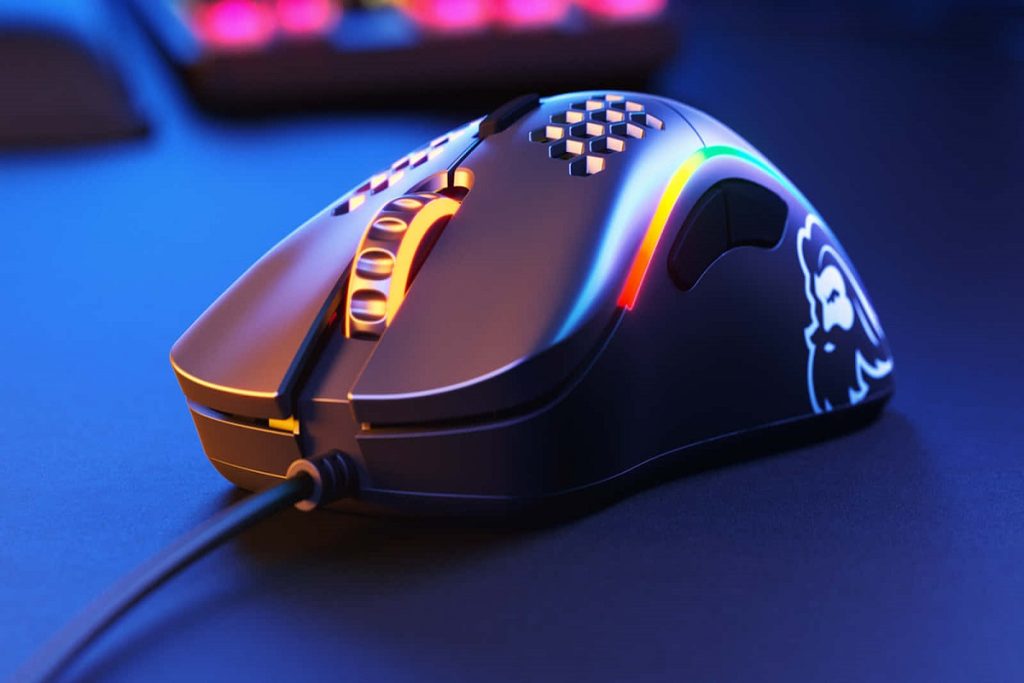
Choosing the right gaming mouse can make a world of difference in your gaming performance. Whether you’re an avid (FPS) player or an MMORPG enthusiast, the precision, comfort, and responsiveness of your mouse can directly impact your gameplay. With so many options on the market, it can be overwhelming to pick the right one for your needs. In this blog, we’ll guide you through the process of selecting the perfect gaming mouse, keeping in mind factors like sensor type, ergonomics, DPI settings, and more.
1. Consider the Type of Games You Play
The type of games you play plays a big role in the kind of mouse you should choose. Different gaming genres demand different features in a mouse:
- FPS: FPS games require a mouse with high precision and fast response times. Look for a mouse with a high DPI (dots per inch) setting, allowing for quick and accurate aiming. Lightweight mice are generally favored for FPS games, as they provide better control and speed.
- MMORPG (Massively Multiplayer Online Role-Playing Games): For MMORPGs, where quick access to multiple keybindings is important, a mouse with programmable buttons can enhance your gaming experience. A comfortable design is also crucial for extended play sessions.
- MOBA (Multiplayer Online Battle Arena): MOBAs often require quick reflexes and many macro abilities, so a mouse with a high number of programmable buttons and a comfortable grip is essential.
2. Choose the Right Sensor Type
The sensor of your gaming mouse is the core of its performance. There are two main types of sensors: optical and laser. Each type has its advantages depending on your needs.
- Optical Sensors: Optical mice use LED light to detect movement, offering excellent accuracy and responsiveness. They tend to perform well on most surfaces and are ideal for gamers who prefer precision over long-range sensitivity. Optical sensors are often found in mice designed for FPS games.
- Laser Sensors: Laser sensors are known for their ability to work on a wider range of surfaces, including glass. They tend to have a higher DPI range than optical sensors, making them a good choice for gamers who want extreme sensitivity. However, laser sensors can sometimes feel less precise than optical sensors at lower DPI settings.
When selecting a mouse, make sure to choose one with a high-quality sensor that suits your playstyle.
3. DPI and CPI Settings
DPI (Dots per Inch) and CPI (Counts per Inch) are terms often used interchangeably to describe the sensitivity of your mouse. The higher the DPI, the more sensitive the mouse is, allowing you to move the cursor or crosshair more quickly across the screen.
- FPS gamers generally prefer a higher DPI (around 2000–12,000 DPI) for quick, precise aiming, while others might go for lower DPI settings (around 800–1600 DPI) for more controlled movements.
- Many gaming mice come with DPI adjustment buttons that let you toggle sensitivity on the fly. This feature is particularly useful for when you need to switch between fast-paced actions (e.g., aiming) and slow, deliberate movements (e.g., navigating menus).
Look for a mouse that allows you to adjust and customize the DPI to fit your preferences.
4. The Shape and Grip Style
The shape and design of the mouse are key factors that affect both comfort and performance. Different players have different grip styles, and it’s important to choose a mouse that fits your hand and feels comfortable during long gaming sessions. The main types of grip styles are:
- Palm Grip: In this grip, your entire hand rests on the mouse. A larger, ergonomic mouse with a natural shape is best for palm grip users. It offers more stability for slower, precise movements.
- Claw Grip: With this grip, your fingers curl over the mouse while your palm barely touches the mouse. A medium-sized, lightweight mouse with a tapered shape is ideal for claw grip users, as it allows for faster, more agile movements.
- Fingertip Grip: In this grip, only your fingers and tips of your palm touch the mouse. This style works best with a lightweight, small mouse, allowing quick, snappy movements.
When choosing a gaming mouse, pay attention to its shape and ergonomics to ensure it suits your grip style. Try out different options to see which one feels the most natural.
5. Mouse Weight and Build Quality
The weight of a mouse is an often overlooked but important factor in choosing the right one. Some players prefer heavier mice for a more stable and controlled feel, while others prefer lightweight mice for faster movements and agility.
- Lightweight Mice (under 100g): These mice are ideal for games requiring quick reflexes, like FPS games. Their lighter weight allows for fast, precise movements, minimizing hand fatigue over long sessions.
- Heavy Mice (above 100g): These offer more control and stability, making them better suited for slow, deliberate movements in genres like RTS (Real-Time Strategy) or MOBA games.
Some mice even come with adjustable weights, allowing you to customize the weight to your liking.
In addition to weight, make sure the mouse is built from durable materials. Look for high-quality switches (for better click responsiveness) and reinforced cables (for less drag and more durability). A good mouse should feel solid and responsive, even after extended use.
6. Additional Features: Customization and RGB
Customization options are another big plus when choosing a gaming mouse. Many modern gaming mice come with programmable buttons, allowing you to assign custom macros or hotkeys to make your gaming experience more efficient.
- Programmable Buttons: These are especially important for genres like MMORPGs or MOBA games, where you may need to perform complex actions with the press of a button. Some mice feature up to 12 buttons, which can be customized through the mouse software.
- RGB Lighting: While this is mostly aesthetic, many gamers enjoy the customizable RGB lighting found in many gaming mice. Some mice allow you to sync lighting with game events or match your setup’s color scheme, creating a more exciting gaming environment.
7. Brand Reputation and Reviews
Finally, it’s important to consider the brand reputation and user reviews when choosing a gaming mouse. Trusted brands like Logitech, Razer, SteelSeries, and Corsair have established themselves as leaders in gaming peripherals, providing quality mice that cater to different types of gamers.
Look for online reviews and product comparisons to get an idea of the mouse’s performance, build quality, and overall value. It’s also a good idea to check if the mouse has a warranty, as this can provide peace of mind in case it develops issues over time.
